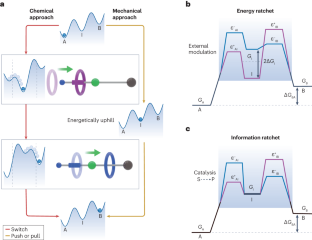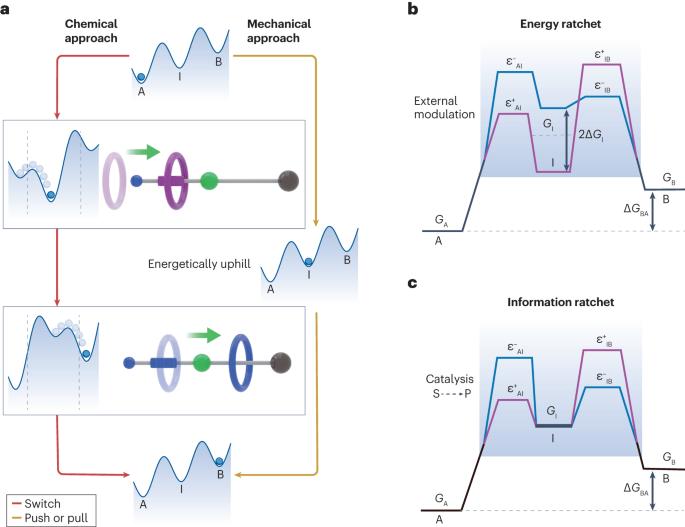Artificial molecular pumps
IF 56
Q1 MULTIDISCIPLINARY SCIENCES
引用次数: 0
Abstract
Reflecting on recent progress in bottom-up engineering focused on creating the smallest devices capable of controlling nanoscale motion, artificial molecular pumps (AMPs) are among some of the most highly studied wholly synthetic machines. In addition to exploring their applications in synthesizing mechanically bonded compounds, including polymers and materials, the design features and underlying fundamental physical principles of rotaxane-based AMPs are discussed in this Primer. Current limitations in AMP design are reviewed, and potential strategies to overcome these limitations are evaluated. Anticipated future developments in this rapidly evolving area of science are considered. Although still in their infancy, the design and synthesis of AMPs have already led to new insights into fundamental molecular principles, such as kinetic asymmetry, trajectory thermodynamics and the non-equilibrium pumping equality. With the ineluctable continuing development of AMPs, an increasing number of ground-breaking discoveries are anticipated in the physical and life sciences. Artificial molecular pumps are synthetic machines capable of performing complex tasks on a molecular scale. In this Primer, Zhang et al. discuss the design features and underlying fundamental physical principles of artificial molecular pumps.


人工分子泵
人工分子泵(AMPs)是近年来自下而上工程学的最新进展,其重点是创造出能够控制纳米级运动的最小装置,人工分子泵是研究得最多的全合成机器之一。除了探讨人工分子泵在合成聚合物和材料等机械结合化合物中的应用之外,本入门指南还讨论了基于轮烷的人工分子泵的设计特点和基本物理原理。回顾了目前 AMP 设计的局限性,并评估了克服这些局限性的潜在策略。还考虑了这一快速发展的科学领域的预期未来发展。尽管 AMPs 的设计和合成仍处于起步阶段,但它已使人们对基本分子原理有了新的认识,如动力学不对称性、轨迹热力学和非平衡泵平等。随着人工分子泵的不断发展,预计物理和生命科学领域将出现越来越多的突破性发现。人工分子泵是一种能够在分子尺度上执行复杂任务的合成机器。在这本《入门》中,Zhang 等人讨论了人工分子泵的设计特点和基本物理原理。
本文章由计算机程序翻译,如有差异,请以英文原文为准。
求助全文
约1分钟内获得全文
求助全文

 求助内容:
求助内容: 应助结果提醒方式:
应助结果提醒方式:


